Place of origin India Serving temperature Hot | ||
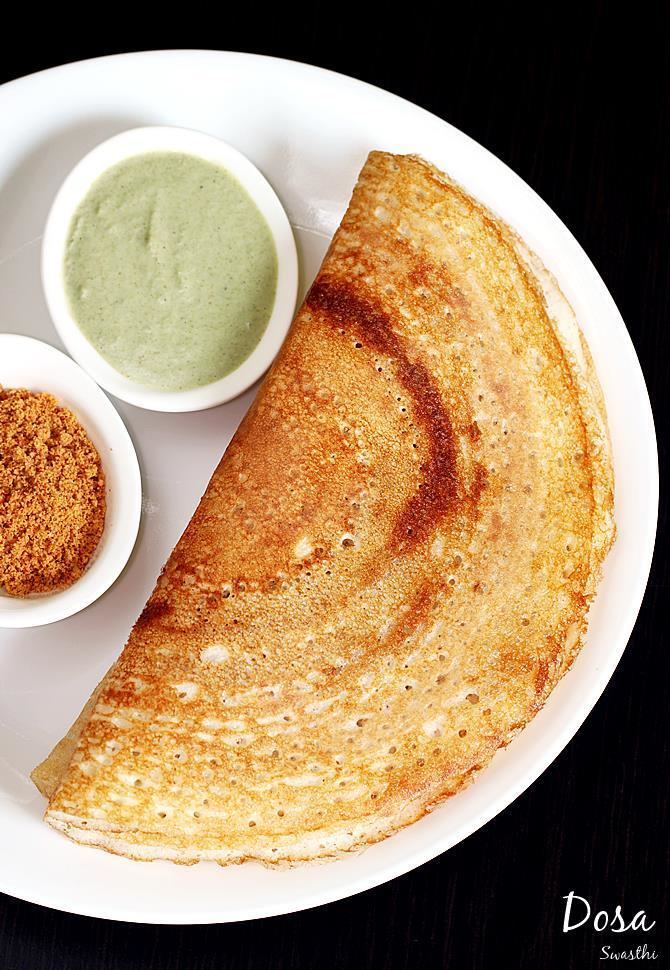 | ||
Course Breakfast, Main course, Supper Similar | ||
Dosa is a type of pancake made from a fermented batter. It is somewhat similar to a crepe but its main ingredients are rice and black gram. Dosa is a typical part of the South Indian diet and popular all over the Indian subcontinent. Traditionally, Dosa is served hot along with sambar, stuffing of potatoes or paneer and chutney. It can be consumed with idli podi as well.
Contents
- Dosa popular south indian food sada dosa recipe by ruchi bharani
- History
- Names
- Nutrition
- Preparation
- Serving
- Variations
- Masala dosa
- Related foods
- References
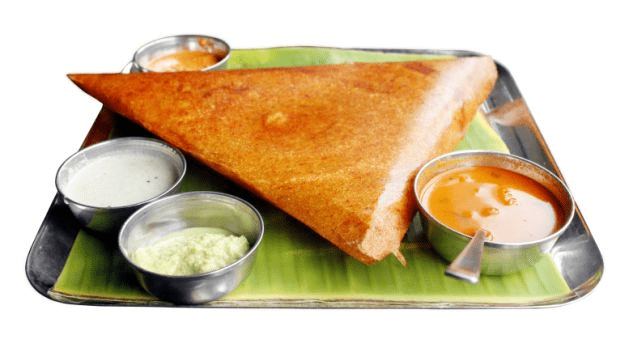
Dosa popular south indian food sada dosa recipe by ruchi bharani
History
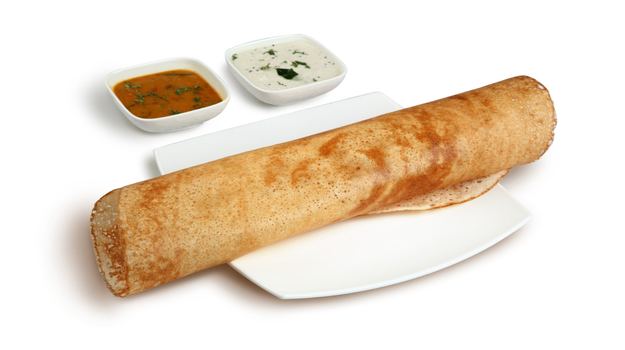
Dosa is indigenous to South India; its exact birthplace in that region is a matter of conjecture. According to food historian K. T. Achaya, dosa (as dosai) was already in use in ancient Tamil country around the 1st century AD, as per references in the Sangam literature. According to P. Thankappan Nair, dosa originated in the Udupi town of present-day Karnataka.
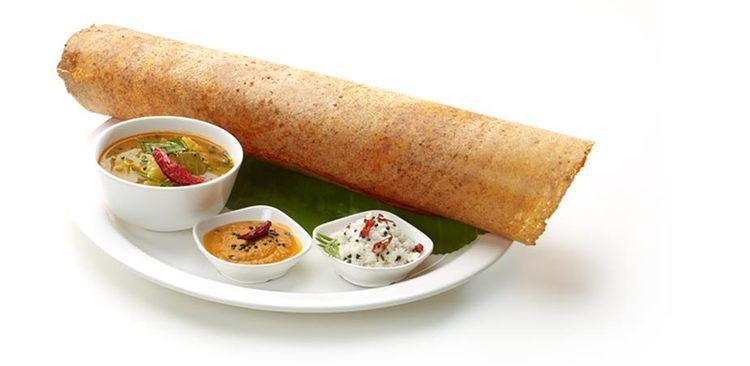
In popular tradition, the origin of dosa is linked to Udupi, probably because of the dish's association with the Udupi restaurants. Also, the original Tamil dosa was softer and thicker. The thinner and crispier version of dosa, which became popular all over India, was first made in present-day Karnataka. A recipe for dosa (as dosaka) can be found in Manasollasa, a 12th-century Sanskrit encyclopedia compiled by Someshvara III, who ruled from present-day Karnataka.
Names
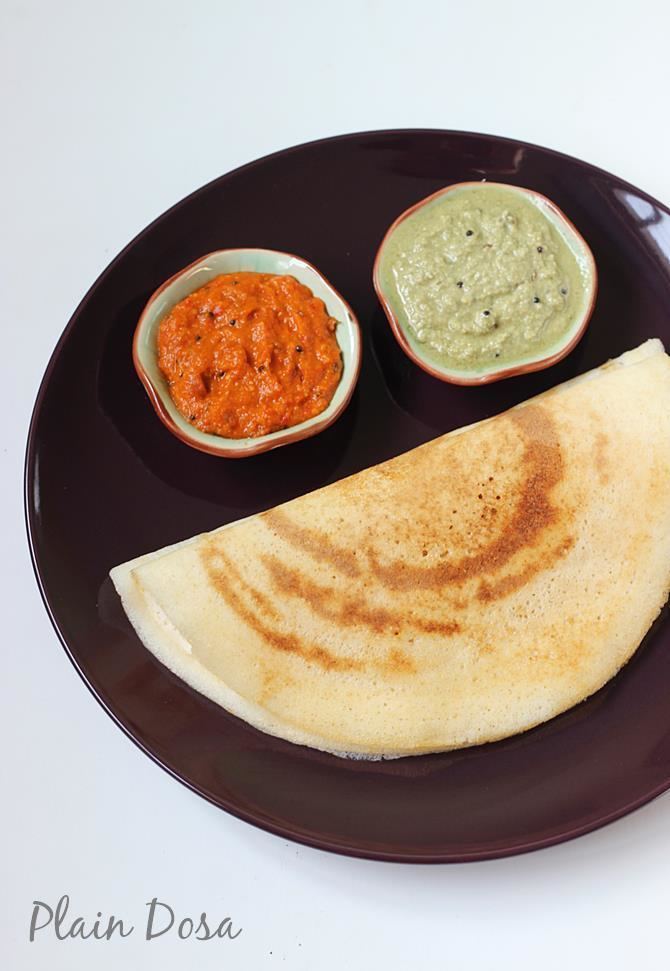
Dosa is known by several names. The standard transliterations and pronunciations of the word in various South Indian languages are as follows:
Nutrition
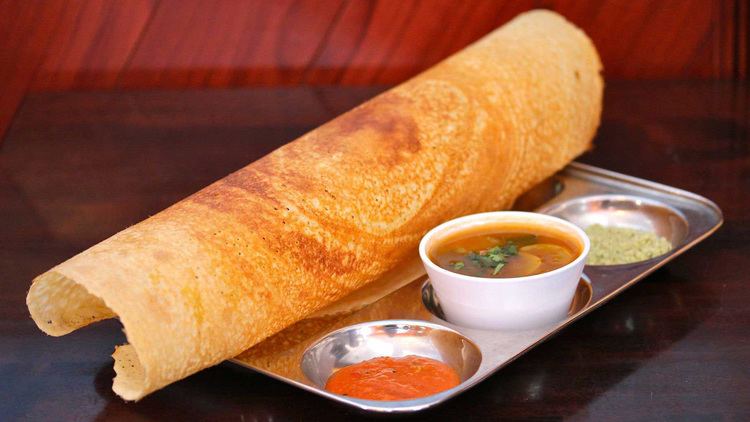
Dosa is high in carbohydrates and contains no added sugars or saturated fats. As its key ingredients are rice and black gram, it is also a good source of protein. The fermentation process increases the vitamin B and vitamin C content. There are also instant mix products for making dosa which usually contain higher amounts of rice.
Preparation
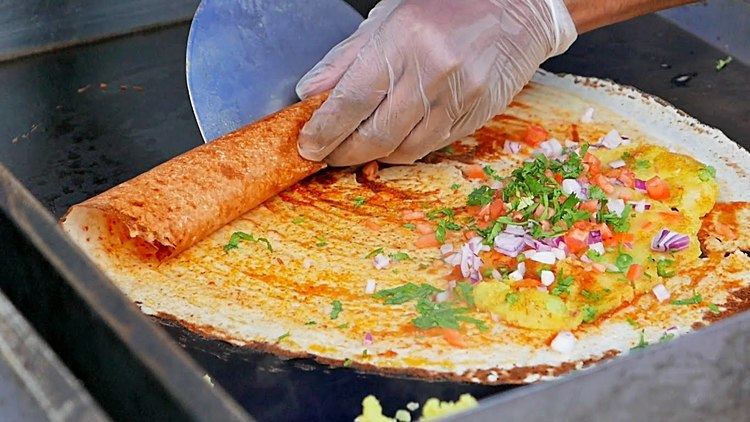
A mixture of rice and black grams that has been soaked in water is ground finely to form a batter. Some add a handful of fenugreek seeds soaked along with the rice. The proportion of rice to lentils is generally 4:1 or 5:1. The batter is allowed to ferment overnight. After the overnight fermentation, the batter is mixed with water to get the desired thickness. The batter is then ladled onto a hot tava (griddle) greased with oil or ghee (clarified butter). It is spread out evenly with the base of a ladle or bowl to form a pancake. A dosa is served hot, either folded in half or rolled like a wrap. It is also usually served with Chutney and sambar. The mixture of black grams and rice can be replaced with highly refined wheat flour or semolina.
Serving
Dosa can be stuffed with fillings of vegetables and sauces to make a quick meal. They are typically served with a vegetarian side dish which varies according to regional and personal preferences. Common side items are:
Variations
Though dosa typically refers to the version made with rice and lentils, many other versions exist.
Masala dosa
The masala dosa is made by stuffing a dosa with a lightly cooked filling of potatoes, fried onions and spices. The dosa is wrapped around an onion and potato curry or masala. Masala dosa was listed as number 49 on World's 50 most delicious foods compiled by CNN Go in 2011.
